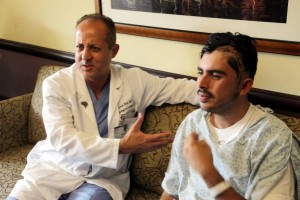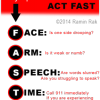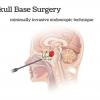Ramin Rak MD is one of the nation’s foremost experts on administering awake craniotomies at Neurological Surgery, P.C. in New York. Ramin Rak MD must perform an awake craniotomy when a brain tumor is inaccessible, buried under tissue in the eloquent cortices of the brain. When tumors are this hard to reach, one wrong move will negatively impact the patient’s motor, sensory, and linguistic skills. Awake craniotomies allow Ramin Rak MD to monitor these skills during surgery and make sure no damage has occurred, by asking patients to read a word from a cue card or lift their arm. Surgeons have no way of monitoring their patients’ status while the patient is asleep, so awake craniotomies are an ideal precautionary measure.
Ramin Rak MD uses his excellent beside manner to prepare patients for awake craniotomies during pre-operated counseling and testing. He begins by explaining that the brain contains no pain fibers, so they should not worry about feeling pain. He then explains step-by-step what the patients should expect during surgery.
Patients receive an anesthetic on the scalp after being sedated with intravenous (IV) fluids. The patient is then gently woken up, and as the patient wakes up and perceives the operating room, Ramin Rak MD is able to map out his or her brain using functional magnetic resonance imaging (fMRI). This map allows Ramin Rak MD to evaluate the suitability of an awake craniotomy by using the patient’s own thought processes to find the functional areas of the brain within the eloquent cortices that are affected by the tumor.
Ramin Rak MD has used his knowledge of awake craniotomies to author a chapter in the Atlas of Neurosurgical Techniques on Endoscopic Assisted Microneurosurgery. He has also been invited to present his techniques at professional medical conferences held by organizations like the American Association of Neurological Surgeons.



